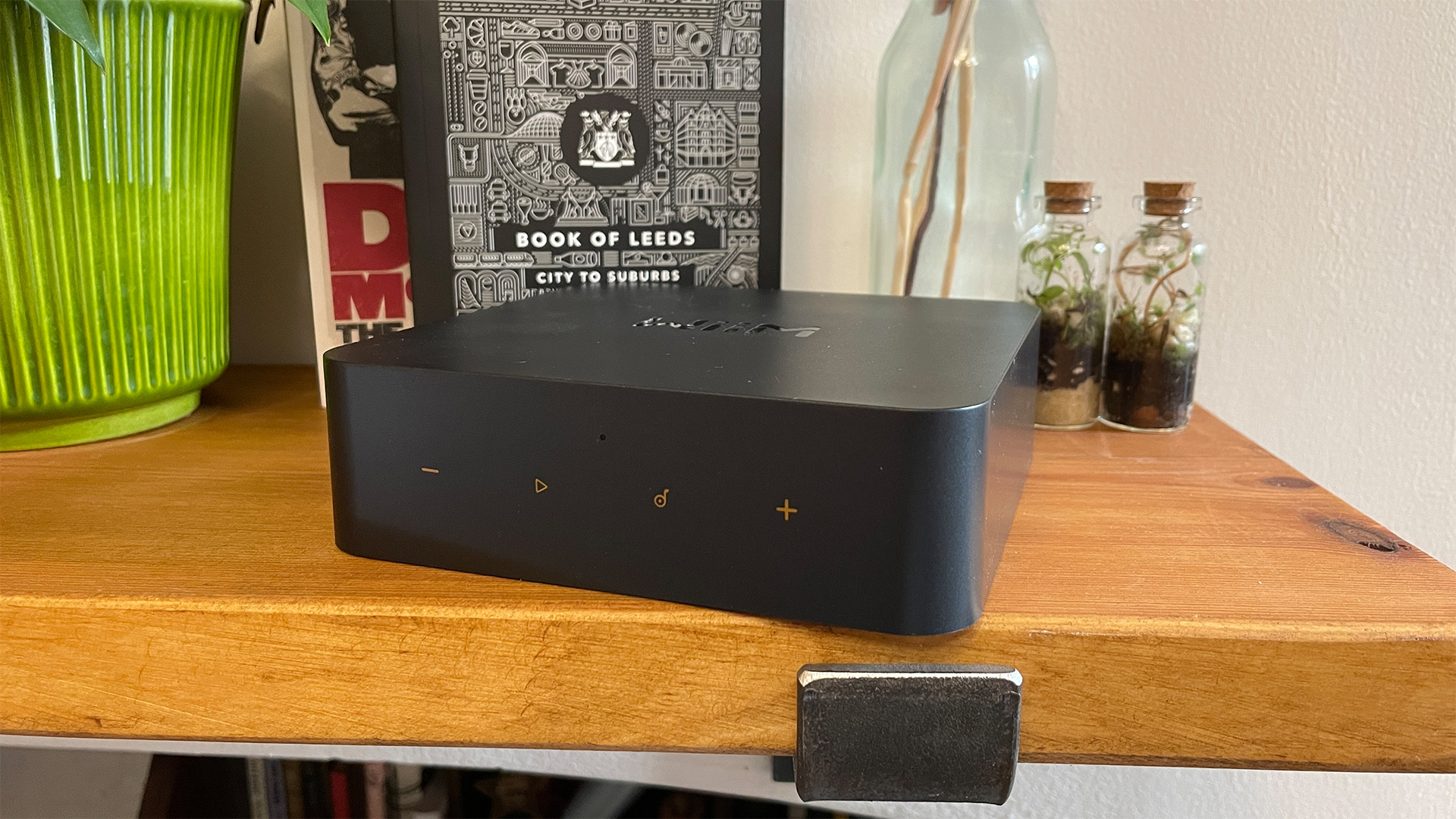What Hi-Fi? Verdict
As long as you can live with its HDMI 2.1 limitations, the Sony A90J is the best TV you can buy right now
Pros
- +
Supremely punchy and sharp
- +
Peerless motion processing
- +
Excellent sound by TV standards
Cons
- -
Missing/buggy HDMI 2.1 features
- -
Lacks UK catch-up apps
- -
Pricier than most rivals
Why you can trust What Hi-Fi?
It might be assumed if a particular television is great at one size, then it automatically follows that it will also be great at others. But while most core components are carried over from one size to another, many aren’t – most notably the panel.
LCD/LED models are the most prone to variation – a 49-inch panel will likely have different specs to a 650-inch one and may even be made by a different manufacturer – but OLED TVs aren’t immune either. Audio quality tends to vary with size, too, as a bigger chassis typically results in a fuller sound.
What’s more, even if a TV did perform identically at each size it was available, its value against same-size rivals would likely differ which, as we review on a performance-per-pound basis, could affect our judgment.
That’s why at What Hi-Fi? we test each model in as many sizes as we can. And so, having been blown away by the 55-inch version, we’re eager to follow up with the 65-inch Sony XR-65A90J.
And, despite the great potential for inconsistency from one size to the next, it turns out that the 65-inch A90J really is just as brilliant as its 55-inch sibling.
Pricing
The Sony XR-65A90J is priced at £3499 ($3800) at launch. That makes it significantly more expensive than the 65-inch version of LG’s C1 (£2499, $2500) and even its G1 OLED Evo (£2999, $3000).
The A90J is also available as a 55-inch model (XR-55A90J) for £2699 ($2800) and an 83-inch model (XR-83A90J) for £6999 ($8000).
Build
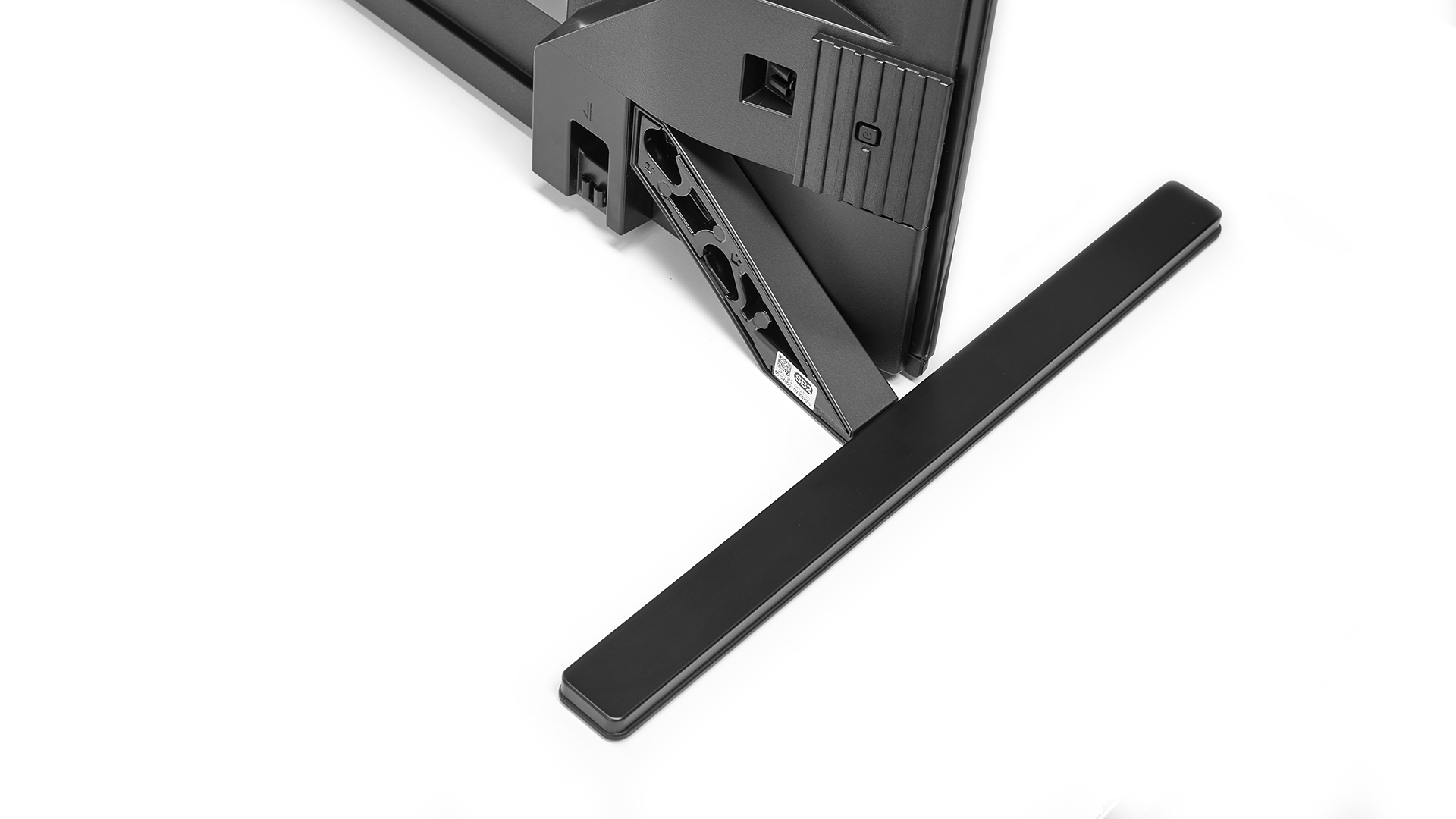
It’s hard to make a modern TV stand out from the crowd. The move to slimmer sets and ever-thinner bezels leaves little room for creativity. Even logos are at threat of extinction, although Sony has managed to squeeze a subtle one into the bottom-left corner of the A90J’s frame.
The real design talking point is the feet, which can be placed in two different positions. The default position has them splayed out beyond the left and right edges of the main chassis, which sits more or less flush with the furniture upon which the TV’s been placed. That makes the TV even wider than it needs to be and also leaves no room for a soundbar.
If either point is of concern to you, you can switch the feet around and install them in their soundbar position, which elevates the TV by about 7cm (2.7 inches). Even in this configuration, the TV has a 137cm-wide (54-inch) footprint, but it creates an ideal gap for a soundbar. The feet have no cable channels, so the wires dangling out of the back of the TV will be visible through the gap if it isn’t filled.
Viewed in profile, most OLED TVs are a combination of a thin panel section and much thicker enclosure for the sound system, processing hardware and connections, and the Sony A90J doesn’t deviate from that template. Its panel section is around 6mm (0.2 inches) thick, but not far from the top edge the enclosure juts out, covering the rest of the panel’s rear. This section is 41mm (1.6 inches) thick. In comparison, the LG C1 is 47mm (1.8 inches) at its thickest point, while the picture frame-like LG G1 is a uniform 20mm (0.8 inches).
Features
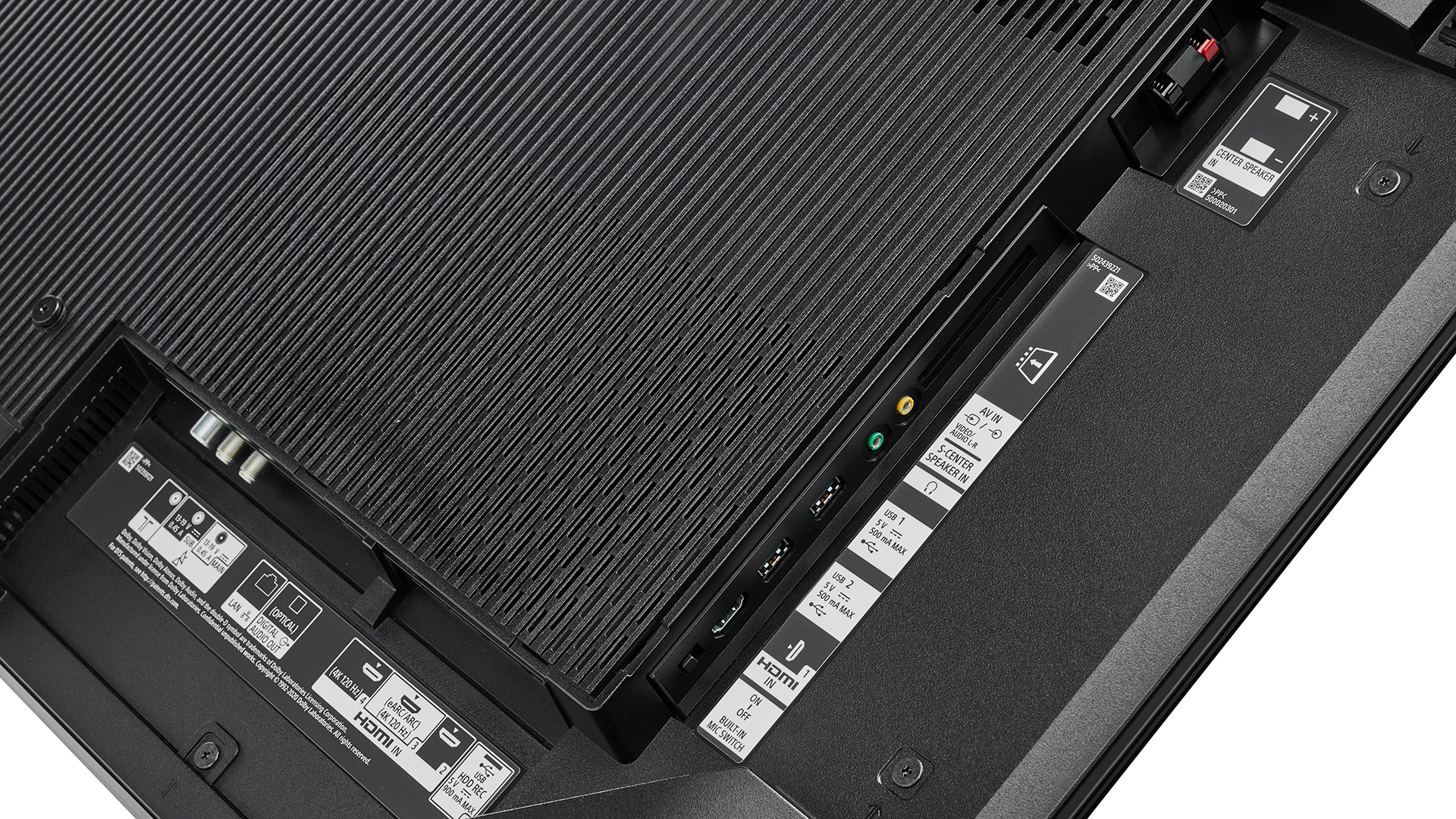
The ‘XR’ in the XR-65A90J’s model designation comes from its Cognitive Processor XR chip, which combines the AI abilities of its X1 predecessor with a system Sony calls cognitive intelligence. While AI analyses picture and sound signals and uses data based on machine learning, cognitive intelligence aims to add a more human perspective to identify and enhance AV performance and deliver an experience in line with how humans see and hear the world.
This world-first TV picture processing, according to Sony, begins with a scene detection stage to identify and enhance the main focal points and, ultimately, adds a greater sense of depth to the image. The XR processor looks at multiple zones and other elements (colour, contrast, texture, depth, detail, etc) of each frame and performs a cross-analysis to work out the most important areas.
Improvements have been made to the OLED panel, too. Sony has introduced an aluminium sheet that essentially acts as a heatsink, allowing for increased brightness. Though neither company has confirmed it, the Sony A90J is also believed to use the same next-gen panel as LG’s G1 OLED Evo model, which itself boasts higher brightness than that of OLED TVs before it. LG would say that OLED Evo performance is a result of more than just the panel, but the point is that the A90J appears to have the raw materials required to produce a picture performance above and beyond what we’ve typically come to expect from OLED TVs.
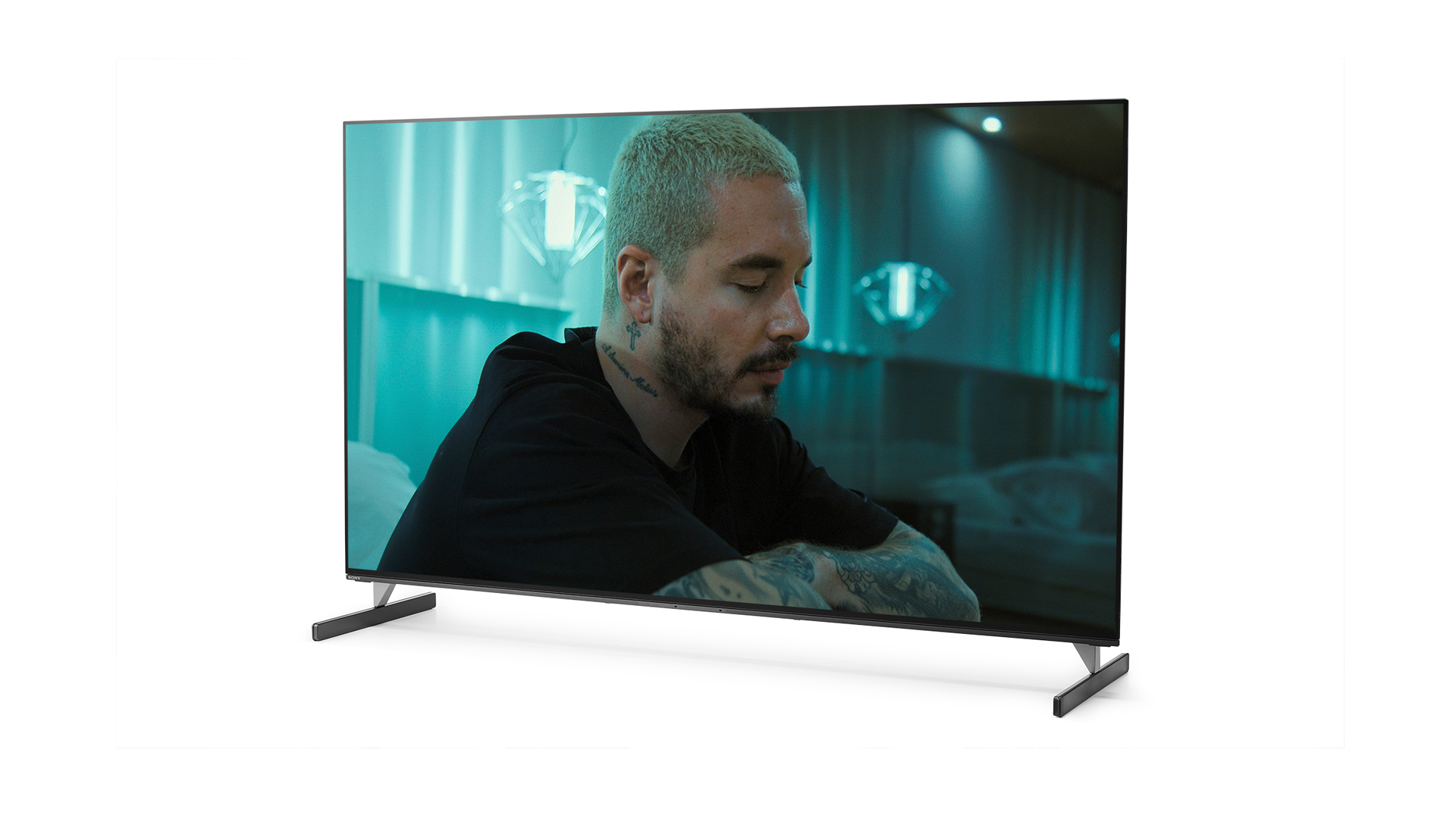
Screen type OLED
Resolution 4K
Operating system Google TV
HDR formats HDR10, Dolby Vision, HLG
HDMI x4 (HDMI 2.1 x2)
4K@120Hz Yes
VRR No
ALLM Yes
ARC/eARC eARC
Optical out Yes
The A90J features some exciting audio technology, too. Sony is sticking with its highly successful Acoustic Surface Audio+ technology, which involves actuators that vibrate the whole screen, creating sound from the display itself. With the A90J, the two actuators are joined by two woofers for added bass weight and depth. You can even use the TV as the centre speaker in a surround system, thanks to the speaker terminals on the rear.
Sony’s also looking to close the gap on its rivals in terms of next-gen HDMI specs, but it’s only partially successful in this regard. The A90J has two HDMI 2.1 sockets that support 4K@120Hz and ALLM, but one also handles eARC/ARC, potentially limiting you to connecting just one HDMI 2.1 source if you need to use the other for your sound system. VRR is missing at this stage, too. Sony says this will be added via a future firmware update, but its track record with updates isn’t great so it's probably wise to not hold your breath.
Also, while the A90J's 4K@120Hz feature works fine with a PS5, it causes problems with an Xbox Series X if Dolby Atmos sound is also enabled. It also appears to disable ALLM, which works fine during testing when 60Hz is selected.
It’s also worth noting that to enable 4K@120Hz, Dolby Vision is disabled, so you won’t get Dolby Vision from the Xbox Series X’s built-in apps unless you first switch the TV from its ‘Enhanced Format’ mode (which enables 4K@120Hz) to its ‘Enhanced Format (Dolby Vision)’ mode. You then have to switch back if you want to play a game in 4K@120Hz. Owners of an LG OLED TV don’t have to jump through any of these hoops.
Those HDMI 2.1-related foibles will only be of concern to hardcore gamers, but buyers in the UK should also be aware that there are shortcomings in the A90J’s app offering: at launch, the set is missing BBC iPlayer, ITV Hub and All 4. Sony says it’s working to solve the situation, but it's disappointing to note that it hasn’t been sorted in the month since we tested the 55-inch model. You can at least use Google Chromecast to send content to the TV from the respective apps on your phone, but this won't be a satisfactory solution for all.
It’s a shame because the app selection is otherwise strong. Netflix, Amazon Prime Video and Apple TV are here in all of their 4K, Dolby Vision and Dolby Atmos glory; Disney+ is delivered with 4K and Dolby Vision, but not Dolby Atmos (this appears to be a Google/Android TV issue as previous Sony and Philips sets have been similarly lacking), and the YouTube app (now the home of your Google Play Movies and TV library) works in 4K and HDR10. Plex and VLC make for easy playback of your stored content; and Spotify, Tidal, Amazon Music and Deezer give you plenty of options for music streaming. Users in the UK will also find native apps for Now and BT Sport.
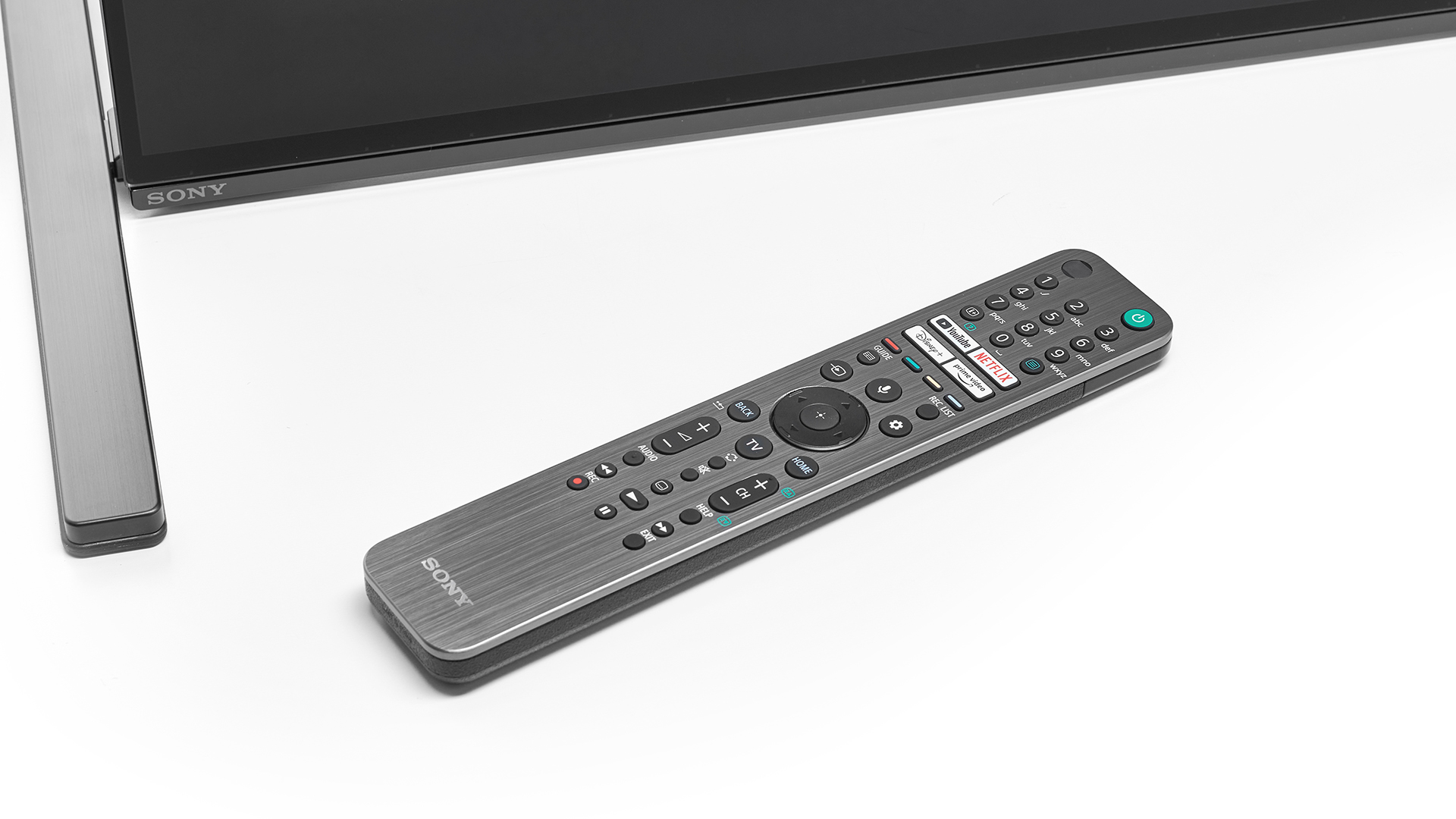
Exclusive to Sony’s high-end 2021 TVs is the new Bravia Core app, which streams blockbuster movies at bitrates higher than any other app. You need an exceptionally fast connection (115 Mbps minimum) to hit the highest quality level, but the picture is still impressive over an 80Mbps connection. What’s more, when you purchase the A90J, you receive some tokens to 'buy' movies on Bravia Core, so there’s no downside to giving it a whirl.
Interaction with the TV is through the Google TV operating system, which is a significant improvement on the Android TV of previous Sonys. It’s snappy in use and you can jump to a specific movie or TV show by using the row of personalised recommendations. That said, this row only brings in content from Disney+, Amazon Prime Video and Apple TV, which rather limits its usefulness.
When using the Chromecast with Google TV, this row of recommendations also includes Netflix content, so it’s a mystery why it’s missing from the Sony TV. The fact that Bravia Core content is also absent from recommendations highlights one of the issues a TV manufacturer faces when using an operating system from a third-party provider. You imagine that if Sony produced the TV OS, its content would be placed front and centre.
Along with the new operating system, there’s a smart and stylish remote control furnished with a light- and motion-activated backlight that makes individual buttons easy to find in the dark. The backlight even shines through the logos of the YouTube, Netflix, Disney+ and Prime Video shortcut buttons.
Picture

Kicking off with Rogue One in Dolby Vision, it soon becomes clear that there’s an impressive degree of consistency between this 65-inch version of the A90J and its 55-inch sibling. Pixel density is slightly lower on the bigger model, as the same number of pixels are being stretched over a larger area, but the XR processor appears to be compensating for this somewhat, so there’s little loss of definition to the image, which still pops from the screen and has the kind of three-dimensionality that makes it seem as if you could reach into the set and pick up the ships that orbit Scarif.
There’s a little extra richness to our 65-inch sample, but the two TVs are remarkably alike. We’d expect two identically sized examples of the same TV to exhibit more variation than this, so the degree of consistency here is noteworthy. You are, essentially, getting the same stunning picture in a bigger and more cinematic size.
We draw the same conclusions when we switch to Get Out in HDR10 (the A90J doesn’t support HDR10+). In the opening scenes, there’s a pre-horror glow to the apparently idyllic home of the Armitage family. Here, that marginal extra richness to the 65-inch A90J’s colour balance gives everything a bit more warmth, but it’s otherwise essentially the same performance across both models. That makes it supremely subtle in terms of shading, brilliantly sharp and, most of all, bright and punchy, to a degree that even the LG G1 can’t match.
It’s a brilliantly detailed delivery, too, and not just through the middle of the contrast band: the brightest picture elements are full of nuance, and there’s exceptional insight into the darkest areas, ensuring that you never miss a detail. Make sure you set the HDR Tone Mapping setting to Gradation Preferred – switching to Brightness Preferred will get you an even punchier and more contrasty image, but you lose some of those fine details at either end of the light spectrum.
The A90J is a talented upscaler, too. Our 1080p Blu-ray of Spider-Man: Far From Home would be mistaken for 4K by some, such is the crispness of its appearance. The TV does a great job of balancing vibrancy and naturalism when dealing with the colours of the SDR signal. And even standard-def daytime TV looks passable on the A90J, though to watch much of that would be a waste of such an impressive set's talents.
The A90J’s authenticity is undoubtedly one of its greatest strengths. It’s in the way it handles colours, but also how it’s so incredibly sharp but never looks oversharpened. The motion-handling, too, is peerless – the A90J sharpens and smooths even the trickiest motion without adding artificiality or losing its grip on proceedings. LG’s 2021 OLEDs, which are the company’s best yet in terms of motion handling, are still a step behind this Sony.
Sound
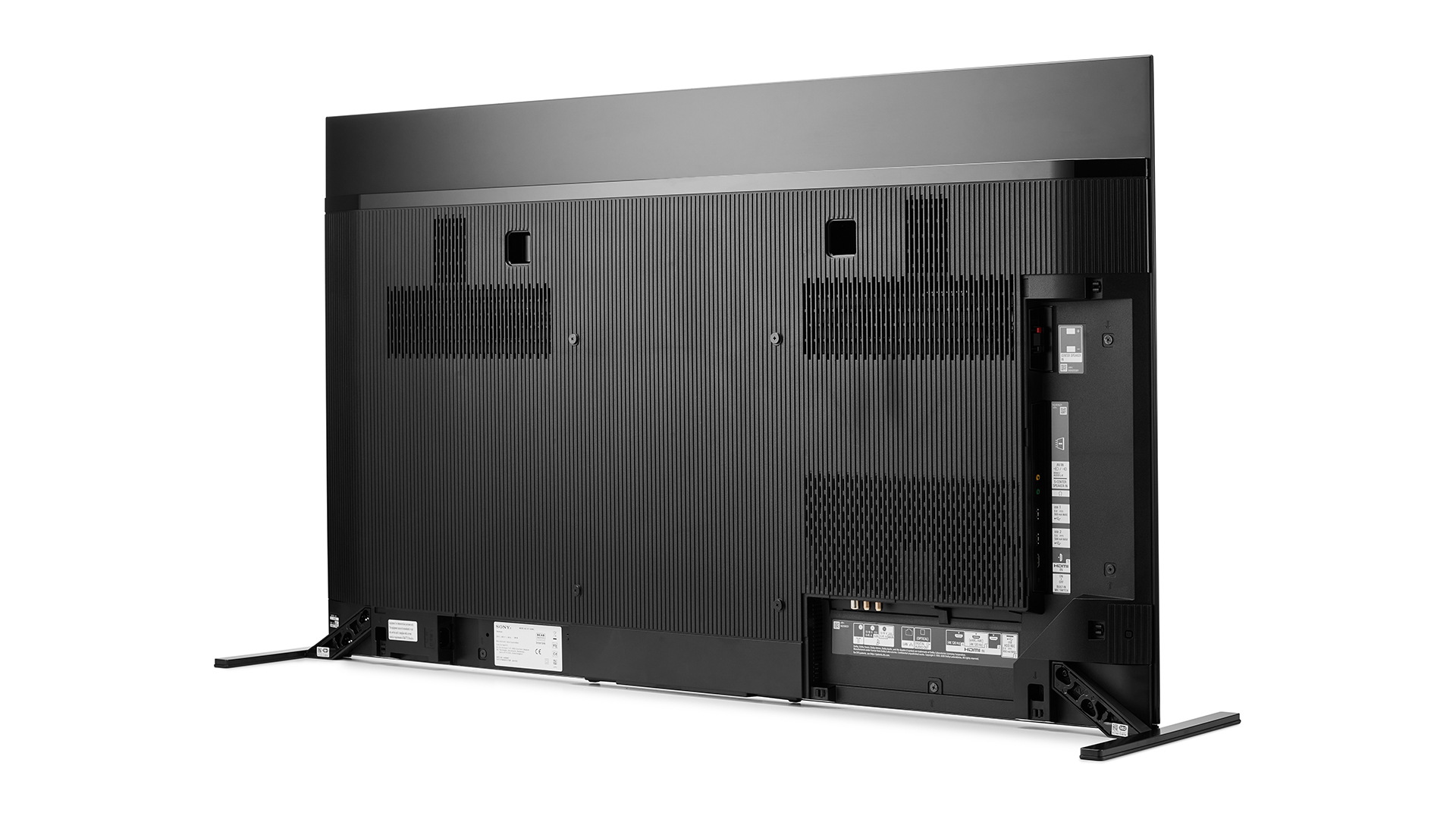
We’re used to the bigger version of a TV sounding a little fuller and weightier than those the size below, and so it proves with the A90J. This 65-inch model digs up and reproduces more of the abundant low bass in the Blade Runner 2049 soundtrack, making it sound more threatening. The 55-inch model already did an admirable job of stretching the sound beyond the dimensions of the screen, but here it sounds even bigger and more spacious.
This A90J is also a little smoother in its delivery than our 55-inch sample. The leading edges are slightly less impactful, but there’s a more pleasant flow to music and movie soundtracks, with the smaller version of the TV occasionally sounding just a tiny bit forced in comparison.
We’re rather splitting hairs here though, and both versions are head and shoulders above their respective rivals, with a directness, rhythm, tonal balance and scale that few, if any, can match.
You could – and should – still improve upon it by adding a separate sound system, but here a budget soundbar won’t do the job. Something like the Sonos Arc should be considered the entry-level partner for the A90J and, if you have the budget and space, we’d thoroughly recommend opting for a full surround sound system – not least because the stunning picture performance deserves audio to match.
Verdict
The 55-inch Sony A90J is a stunning TV, and this 65-inch version is essentially the same, only bigger and therefore more cinematic.
It’s brighter and punchier than any other OLED TV we’ve tested, and incredibly sharp and detailed, too, but it also boasts an effortless authenticity that means everything looks natural as well as exciting and enticing. Sound is streets ahead of rivals, and Bravia Core is a worthwhile bonus if you have a decent internet connection.
Hardcore next-gen gamers might want to wait to see if the promised HDMI upgrades do the expected job if and when they appear. You should also bear in mind the current absence of UK catch-up apps.
But if you want the best picture and sound available from any TV right now – and you have the budget to match your desires – you simply have to consider the Sony A90J.
SCORES
- Picture 5
- Sound 5
- Features 4
MORE:
Read our guide to the best OLED TVs
Read our LG OLED65G1 Evo OLED review
Read our Sony XR-55A90J review
Read our Samsung QE65QN95A review
What Hi-Fi?, founded in 1976, is the world's leading independent guide to buying and owning hi-fi and home entertainment products. Our comprehensive tests help you buy the very best for your money, with our advice sections giving you step-by-step information on how to get even more from your music and movies. Everything is tested by our dedicated team of in-house reviewers in our custom-built test rooms in London, Reading and Bath. Our coveted five-star rating and Awards are recognised all over the world as the ultimate seal of approval, so you can buy with absolute confidence.

